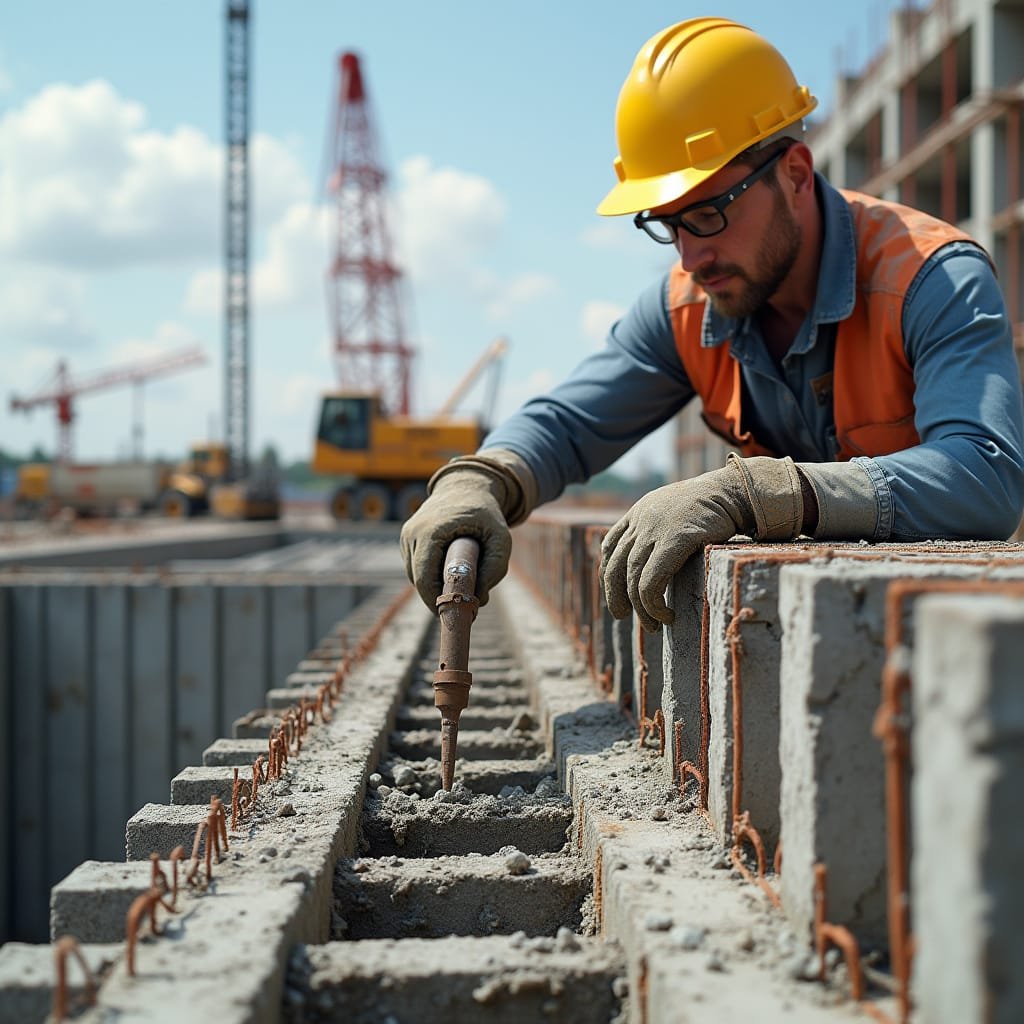Rebar is an essential element in reinforced concrete construction, providing tensile strength to concrete, which is weak in tension. However, for the rebar to perform its intended function, it must be properly bonded with the surrounding concrete. This is where grouting comes into play. Grouting helps in several ways:
- Improves Bonding: The grout fills voids and spaces between the rebar and concrete, ensuring better adhesion and overall structural strength.
- Corrosion Protection: By properly grouting the rebar, you prevent exposure to moisture and other corrosive elements that could weaken the steel.
- Enhanced Durability: Well-grouted rebar ensures that the concrete structure is more resistant to wear, tear, and environmental stressors.
- Sealing and Waterproofing: Rebar grouting can also serve as a waterproofing measure, as the grout prevents water penetration that could otherwise reach the reinforcing bars and cause corrosion.
Types of Grouting in Rebar Applications
Rebar grouting can be categorized based on the method used and the material chosen. Here are the most common types:
- Cement-Based Grout: Often used in projects where high-strength grouting is required. This type of grout is ideal for projects involving heavy-duty structures like bridges and high-rise buildings.
- Epoxy Grout: A more advanced grouting material that is highly resistant to chemical corrosion and temperature fluctuations. Epoxy grout is typically used in highly corrosive environments or when the concrete needs to withstand extreme conditions.
- Polymer-Based Grout: A more versatile grout option that combines the strength of cement with the flexibility and resistance of polymers. It is often used for grouting pre-stressed and post-tensioned concrete elements.
- Injection Grouting: This method involves injecting grout into the voids around the rebar using specialized equipment. It is commonly used in repair work and maintenance of existing structures.
Steps Involved in Rebar Grouting
- Surface Preparation:
- Before beginning the grouting process, ensure the rebar and surrounding concrete are clean. Any dirt, debris, or rust should be removed to promote better adhesion of the grout.
- Mixing the Grout:
- The grout should be mixed according to the manufacturer’s specifications. It is essential to achieve the right consistency so that the grout flows easily into the gaps without being too runny or too thick.
- Injection Process:
- In the case of injection grouting, specialized pumps and injectors are used to inject the grout into the space between the rebar and the surrounding concrete. The grout should be injected slowly and continuously to avoid air pockets.
- Curing the Grout:
- After grouting, the material needs to be allowed to cure. Proper curing is critical for ensuring the grout reaches its maximum strength and adhesion.
- Finishing Touches:
- Once the grout has set, any excess material is cleaned off, and the structure is inspected for uniformity and strength.
Applications of Rebar Grouting
Rebar grouting is used in a wide range of construction projects, including:
- Bridge Construction: Grouting helps ensure that the reinforcing steel is securely bonded to the concrete deck, which is crucial for handling heavy loads and environmental stresses.
- High-Rise Buildings: Grouted rebar in high-rise structures ensures the stability of the building, particularly during seismic events.
- Dams and Retaining Walls: Structures like dams require rebar grouting to maintain structural integrity against water pressure and weather conditions.
- Repair and Rehabilitation: Rebar grouting is frequently used in the restoration of old buildings and structures. It helps repair cracks and voids, ensuring the continued safety and longevity of the structure.
Common Challenges in Rebar Grouting
- Air Pockets: If not injected properly, air pockets can form within the grout, which weakens the bond between the rebar and concrete.
- Uneven Distribution: Uneven grouting can result in weak spots in the structure, compromising its strength and stability.
- Premature Curing: If grout cures too quickly due to environmental conditions (like excessive heat), it may not reach its full potential strength, which can affect the overall performance of the structure.
Conclusion
Rebar grouting is an indispensable part of modern construction. Whether you’re building a high-rise, a bridge, or repairing an existing structure, ensuring the correct application of rebar grouting will enhance the durability and safety of your project. It’s important to choose the right type of grout and follow proper procedures to achieve the best results.




